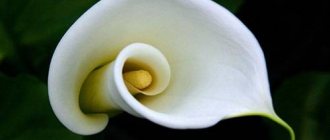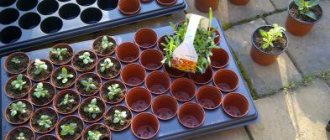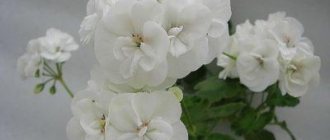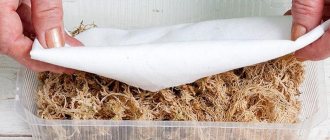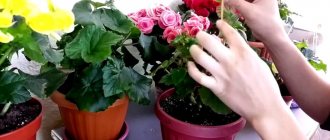Closer to winter, like many plants, geranium requires special care, the provision of which must be competent, because only in this case will it be able to delight the eye with its abundant flowering in spring and summer.
How to organize proper care for geraniums in winter and spring? How to prune before wintering and preserve the plant at home? You will find detailed information in the article below.
Preparing for winter: pruning
Preparation for the dormant period begins in the fall, and the most important thing to do is to prune the geranium.
This will subsequently have a huge impact on how it will bloom. Without pruning, even if all the necessary conditions outlined below are met, such lush and beautiful flowers will not appear on the plant. Procedure for pruning geraniums:
- At the end of September, absolutely all flower stalks are cut off, regardless of whether they have faded or are still actively doing so. This is done to help geraniums preserve their reserves of resources for the winter.
- All leaves that have already turned yellow and withered or have just begun to do so are plucked off or cut off. Experienced gardeners recommend pinching them off rather than cutting them with scissors. In the second case, mere protruding roots remain.
- For dense flowering in September, geranium is pruned so that the beginning of the branches remains, or just above (3–5 cm) the node. The upper cut part can be rooted as a cutting.
You need to prune the plant until it loses its beautiful and lush appearance. If the plant is young, then it is only pinched , and this is done according to the following rules:
- Pinching of young plants begins when their height reaches 5–6 cm.
- After the geranium grows another 5 cm, pinching is done again.
- To achieve a spherical shape, you can pinch it 3 times in a similar pattern.
In this case, pruning can be done both in autumn and in spring, it depends on the variety of geranium. For example, zonal geraniums tend to grow, and if this does not bother you at all, then you don’t have to prune them, but it’s better not to touch very small plants until spring.
For variegated varieties, pruning is very stressful, so it is better to prune them in the spring. You only need to trim the hanging ones when they grow too much.
For small geraniums, pruning will not play a big role, but for those that are large, it is very important.
How to care for a flower in winter
In winter, gardeners should pay attention to the following conditions for keeping pelargonium.
Temperature
In the cold season, geraniums should be kept in a cooler room than in summer. If you cannot ensure this, then you can place the pot on the northern windowsill, making sure that the leaves of the plant do not touch the glass. Ideally, the temperature should not exceed 10-15 degrees above zero. If it is much higher, then there may be a risk of dropping the newly formed buds. The temperature of geraniums can be lowered to 4 degrees.
Protect the flower from drafts.
Lighting
Since geraniums are of South African origin, they love bright light. If the flower is located on northern windows, then it needs to be provided with additional lighting. If this is not done, then the pelargonium will not bloom, and its leaves will become small. The duration of daylight should be at least 12 hours. To create additional lighting, you need to use a lamp marked “phyto”, placing it at a height of 10 centimeters from the top of the flower.
IMPORTANT: There is no need to be afraid of direct sunlight: the flower tolerates it calmly in winter.
Watering
Pelargonium loves regular watering. In winter, it is permissible to water it once a week. You need to ensure that the soil in the pot is always evenly moist. Stagnation of water at the roots of geranium leads to the death of the flower! To adjust the watering system, select a suitable drainage system and light soil for the plant. Expanded clay and perlite can be used as drainage.
It is not recommended to spray geranium because its leaves may turn yellow or become stained.
Trimming
If you do not prune regularly, the plant will stretch out and stop blooming beautifully. It must be taken into account that unpruned pelargonium is predisposed to various diseases. When pruning, use only sterile instruments (scissors or knife). Remove all shoots growing from the axils, leaving only 6-7 leaves on the stem. This procedure is carried out in the fall or at the very beginning of winter.
It is better not to prune geraniums from December to January.
Dried flower stalks and leaves should always be trimmed, even in the cold season. They are easily detached without harm to the plant, even without scissors. The plant needs to be pinched several times during the cold season. Miniature geranium varieties do not require pruning.
How to preserve a plant at home and can it be stored in the basement?
Already in the fall, the pot with the plant is placed in a cool and dimly lit place. A southern or northern window sill in a house/apartment is quite suitable for this, since there is diffused sunlight there. And to make up for the lack of light at this time, you can use fluorescent lamps. The optimal daylight hours are 12 hours.
Such lamps are an excellent solution if it is not possible to place geraniums on the windowsill: you can independently build racks with lamps, thanks to which they can be placed anywhere in the house/apartment. Also, additional lighting guarantees the uniform development of all shoots (when there is insufficient lighting, they begin to stretch).
The frequency of watering and the amount of water for this are gradually reduced, because the plant stores water in its thick stems for the winter. You need to water so that the soil is very slightly moist, and the next watering should be done when the substrate is completely dry.
highly not recommended to fertilize geraniums until the very beginning of March. If the plant suddenly begins to wither, you can add fertilizer, but not more than once every month and a half.
It is better to reduce the temperature to 10 - 12 degrees, so for the winter it is convenient to place the flower on the balcony or in the basement. This temperature regime is observed until the beginning of spring.
Despite the fact that in the cold season geranium should be in a room where the temperature is extremely low, it does not tolerate cold drafts. Therefore, during any ventilation, the plant should be removed as far as possible from the open window.
How to store geraniums in the basement in winter
Some geranium lovers plant it in the garden throughout the summer. Before the winter cold, they are faced with the problem of how to preserve garden geraniums.
There are several ways to store geraniums in the basement:
- Bunches of pelargonium are suspended in the basement at a constant temperature of 2 to 7 degrees above zero. Some gardeners wrap plants in newspaper or place them in paper bags instead of hanging them. In this case, you need to make sure that the bags are open for ventilation. Plant roots are periodically moistened. This method is called “dry storage”.
- Geraniums are planted in pots, before which the roots and stems are cut by two-thirds. Store the prepared plant in the basement at a constant temperature of up to 10 degrees, the room should be twilight. Pelargonium planted in this way is watered infrequently, only when the soil becomes dry. This method of storing geraniums is called “canning”.
Of course, not every basement is suitable for wintering your pets. Several conditions must be met:
- The room must be frost-free and dry.
- Temperature range is within +7 degrees.
- It is good if natural light is supported by the presence of a small window.
- Geraniums must be pruned (all flowers and leaves are removed, only woody parts of the plants remain).
Temperature conditions, levels of illumination, and air humidity are different in all basements. Therefore, in order to understand which method will help to effectively preserve most of the plants in your case, you need to try them all. No matter what storage method you choose for your plants, make sure the danger of frost has passed before planting them outside. Then lush flowering will be guaranteed throughout the next season.
Spring care
At the beginning of March, geranium begins to gradually wake up in order to intensively spend its energy accumulated over its entire dormant period. To do this, the temperature in the room where the flower is located gradually increases. If it was on the balcony, then you can simply bring it into the apartment, and the room temperature will be quite suitable for the entire growing season.
In spring, the rule for this plant is: “the more light, the better!” Therefore, a pot of geraniums is placed on the most illuminated windowsill in the apartment, and it does not matter at all whether diffused or direct sunlight gets there. Only on those days when the sun is especially scorching can the plant be covered with something.
Pruning pelargoniums
All pelargoniums are pruned sooner or later. I know some lovers of this plant who would never agree to “shred” their overgrown bushes in the fall. Even when they have lost all decorativeness and are tied to numerous supports so as not to fall over or break. But what about those gardeners who find it impossible to fit heavy boxes or pots with flowering pelargoniums in a house or other enclosed space?
Summer and early autumn are a time of vigorous growth and flowering, when compact bushes turn into lush, voluminous bushes. In order for them to bloom profusely and become decorative again next year, more or less severe pruning is necessary. When and “how much” to cut depends on many reasons. This is the state of a particular pelargonium, the shape of the bush, the expected conditions of maintenance in winter and summer, etc.
Will this geranium overwinter outdoors?
Some types of geraniums are native Russian plants and decorate our forests and meadows. Which, by the way, often and completely unfairly turns people away from this culture. The following species overwinter in the open ground without problems: magnificent geranium, Himalayan geranium, Dalmatian geranium (G. dalmaticum), red-brown, blood-red (G. sanguineum), macrorhizum (G. macrorhizum), Cantabrigen geranium (G. x cantabrigiense), Clarke (G. сlarkei), forest (G. sylvaticum), meadow, small-stamen (G. psilostemon), oxon (G. x oxonianum), spotted (G. maculatum), ash, Renard (G. renardii), Farrera (G. farreri), erianthum (G. erianthum). Some hybrid varieties, for example “Blue Blood”, “Patricia”, “Salome”, “Ann Folkard”, “Sue Crug”, winter well under snow cover, but there is some risk when growing them, since there are frosts on bare ground in autumn . And under cover there is a danger of damping off. However, flower growers have been successfully growing these varieties for several years now.
For color ideas - dark-leaved varieties
Meadow geranium has several varieties with dark burgundy almost black foliage. It started with the variety "Victor Reiter", but it does not have the darkest foliage. Varieties of the same meadow geranium, different in height, are very decorative: “Midnigth Reiter”, “O’key Dokey”, “Hocus Pocus”, “Black Beauty”, “Purple Heron”. The blue-blue rather large flowers look harmonious with their carved leaves. Varieties with brown foliage of spotted geranium have appeared - “Espresso” and “Elizabeth Ann”. Red-brown geranium pleases with purple-brown spots on a dark green background of carved leaves. The Samobor variety is especially good. Here the foliage dominates, the flowers are much more modest.
Plant in sun or shade
In an open sunny place, Dalmatian, East Tibetan (G. orientalitibeticum, despite its origin, has been wintering in the middle zone for several years), Ash, Farrera, Renarda geraniums feel good. These are all low geraniums. Conversely, magnificent, forest, red-brown, blood-red, marsh (G. palustre), large-rhizomatous, and small-stamen varieties grow well in partial shade and even in the shade.
Marsh, red-brown and Endres geraniums tolerate excess moisture well. Himalayan, Dalmatian, large-rhizome, ash, and Cantobrigen geraniums tolerate dry soil.
But it is better not to experiment, but to provide normal watering to the plants.
You need a lot of geraniums, you will have to propagate them
All methods of propagating geraniums are good. Most often, the bush is divided in the spring. In geraniums that are difficult to disassemble into segments (this is especially true for the varieties “Ann Folkard”, “Patricia”, “Rosanna”, as well as varieties of ash geranium), you can separate a young shoot without roots, as they say, with a heel and, removing it from Most of the leaves can be planted in a greenhouse, or just under a jar. After 2-4 weeks, the plant will take root and be ready to be transplanted to a permanent location.
You can cut root cuttings of geraniums in the spring, treat them with Kornevin and place them in a greenhouse until leaves form. This is the best way to propagate blood-red geranium.
- Author: Maria Sukhorukikh
Rate this article:
- 5
- 4
- 3
- 2
- 1
(0 votes, average: 0 out of 5)
Share with your friends!
How to welcome spring?
Closer to spring, when the temperature outside reaches 2 degrees above zero, you can take pots of pelargonium to the balcony. You need to start with half an hour, gradually increasing the time the geranium stays on the balcony. In this way you can help pelargonium bloom constantly.
If the geranium was stored in the basement, then before taking it outside, you need to soak the bunches in water with fertilizer, then plant them in a pot. Geraniums in a pot should stay indoors for about a week. Only after the last frost has occurred is pelargonium planted in the garden flower garden .
Thus, geraniums should be placed in a cool room in winter, provided with additional lighting and monitored soil moisture. You also need to break off dried leaves and flower stalks from time to time. If you follow all these simple rules, pelargonium will delight you with its flowering and aroma immediately after leaving the resting phase.

